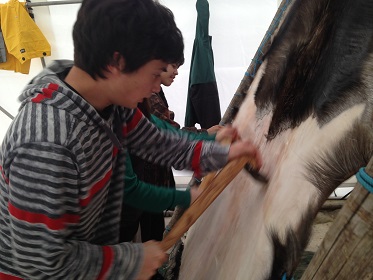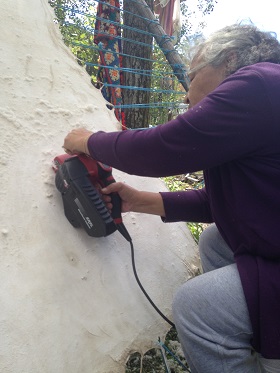
For more than 40 years, Lac La Ronge Cree Nation elder and traditional knowledge keeper Ida Tremblay has learned the art of tanning animal hides, sewing and beadwork patterns particular to that area of northern Saskatchewan. She is passionate about sharing these skills and traditions so they will carry on through future generations.
"Passing knowledge on the correct methods is critical. As the years go by, more and more elders with the knowledge to teach are dying. Time is running out for us to become proud of where we come from and who we are," Tremblay says.
An Indigenous Pathways Initiatives grant enabled Tremblay to collaborate with teacher Christine Ravenis to teach people in surrounding communities how to make moose hide, moccasins, gauntlets and mukluks. The pair taught six weeks of hide-making workshops in Ida's backyard as well as twice-weekly pattern-making, sewing and beading classes at the local school, which continue to this day.

"Making a hide isn't something you can do in a couple of classes. It's a process that can take weeks, depending on how things are going and on the weather," Ravenis says. Even acquiring raw hide is seasonal and dependent on the weather and prime hunting season.
Hide-making steps include removing flesh, stretching, removing hair, drying and preparing hides for smoking, and then smoking, cutting, sewing and beading them to create the final product.
Throughout the process, Tremblay shares the stories of her ancestors and contemporary relations as well as traditional life teachings of Woodland Cree culture. Ravenis says that Tremblay "wants to make sure this knowledge is taught and shared with people who are interested, despite what age or race they are."
Workshop participant Juanita McGunigal says, "I was astonished at all the young people who would come around and show interest in the activities she was doing. Ida never passes up an opportunity to hand down her knowledge to these children, taking the time to teach them about a way of life which is rapidly diminishing."
